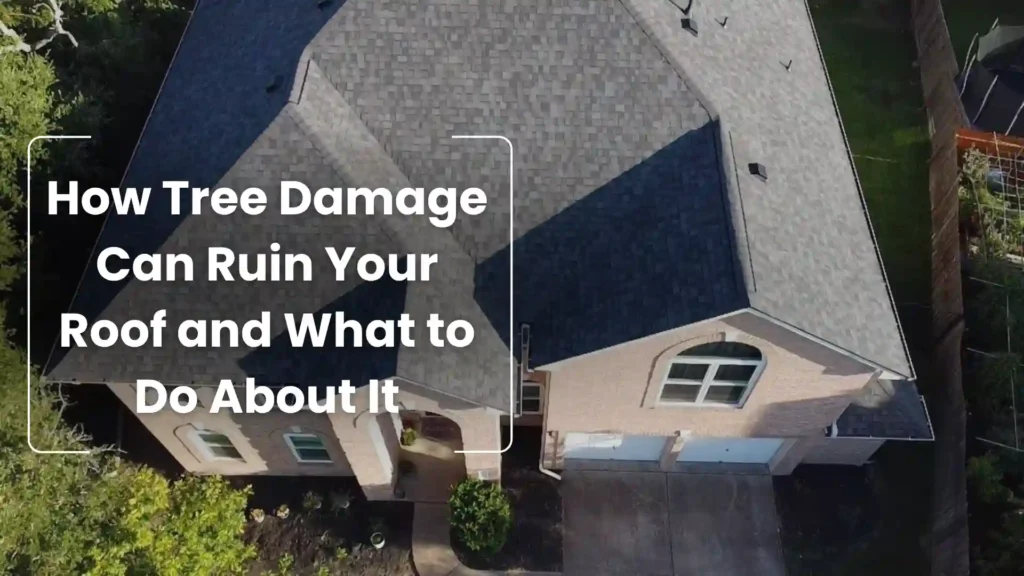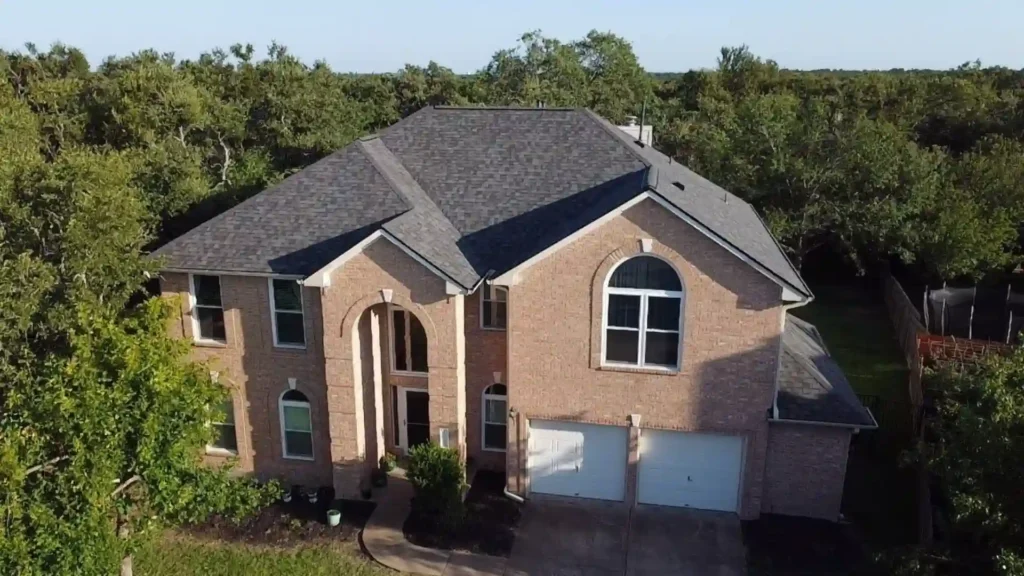How Tree Damage Can Ruin Your Roof and What to Do About It


Large, mature trees can add a lot to your home. The shade they provide in the summer can help lower your energy bills and keep your home cool. They can add to your home’s aesthetic and monetary value, providing your yard with a vibrant and diverse ecosystem. Unfortunately, the downside of having a yard with mature trees is that drought, disease, and violent storms can cause trees or limbs to fall, ruining your roof.
The expert roofing team at RoofsOnly.com knows how much stress can affect the value of your property and the beauty of your yard. We also know how much damage these gentle giants can do when they finally come tumbling down. Fallen trees or limbs can damage your roof, cause significant safety issues, and lead to costly roofing repairs. Let us help you understand how tree damage can impact the structural integrity of your roof and what you can do about it.
What Happens When a Tree Damages Your Roof?
When a tree falls or branches and limbs get torn off during a storm, it can cause massive damage to your home’s roof and other surrounding structures. Minor mishaps can lead to loose or dislodged shingles, damaged flashing, and punctures. Significant damage can cause structural instability and make your home unsafe.
When a tree damages your roof, there are proactive steps you should take to protect your family and your investment:
- Safety First – If it is safe to do so, assess the damage to your property. Evacuate all family members, including pets, to a secure location. In emergencies, a tree falling on a roof can weaken internal structures, raising the risk of a collapse. If the tree has downed power lines, get out of the house and to a safe location, then call your utility company.
- Document the Damage – When possible, document the damage and take plenty of photographs. If you plan to file an insurance claim, documentation can help support your claim.
- Contact Your Insurer – To begin a claim, you must contact your homeowner’s insurance company and follow their directions.
When a tree damages your roof, it is best to call professionals to help you cope with the aftermath. Disease and storm damage can turn trees into significant safety hazards. Attempting to remove the tree or large limbs can be dangerous and could worsen damage to your home’s roof. A professional tree removal service and licensed roofing professionals can assess the damage and help protect you and your home.
Common Types of Roof Damage Caused by Trees
Fallen trees and broken limbs can cause more than physical damage to a roof. Some of the most common types of roof damage caused by trees include:
- Physical Damage – The most common and obvious damage from fallen trees and branches is physical damage to the roof. Trees can warp, crack, or puncture shingles and flashing, sometimes ripping them off the roof entirely. Fallen limbs can also dent or bend gutters, chimneys, skylights, and vents. Toppled trees or large limbs and branches can also compromise the structural integrity of a roof by breaking rafters or damaging trusses and framing.
- Structural Damage – In addition to physical damage, the violent impact of a large tree hitting a home’s roof can sometimes cause the frame to shift, affecting the house’s structural integrity. Sagging ceilings and cracked walls are evidence of potentially unsafe conditions.
- Blockages and Drainage Issues – Branches and limbs that damage gutters or leaves and twigs from fallen limbs can cause blockages, preventing your home’s gutters from functioning correctly and allowing rain to flow off your roof and away from your home.
- Water Damage – During intense Texas rain, hail, and wind storms, trees often fall and limbs break. The physical damage caused by the fall can expose your home to water, leading to leaks, water damage, and the potential for rot and mold problems.
- Fire Danger – Tall trees can also bring down power lines, increasing the risk of short circuits and electrical fires on the roof or near the home.
How to Prevent Future Tree Damage to Your Roof

- Tree Trimming and Maintenance – Trees need regular trimming and maintenance to keep them healthy and prevent limbs from falling. Always trim back branches that extend over your roof or are close to encroaching on your roof. Ideally, limbs should be ten feet from your roof. You should also cut back any branches that appear dead or are dying.
- Watch for Disease – Drought, pests, fungi, and diseases, like Oak Wilt and Armillaria Root Rot, can weaken and kill trees. Dying and diseased trees are much more likely to fall, especially during intense storms. Watch for common signs of disease and treat your tree as necessary. If a tree is beyond saving or already dead, contact a professional tree removal service to have it safely removed before it falls.
- Clean Your Gutters or Install Gutter Guards – Fallen leaves, twigs, and small branches can clog gutters and block downspouts. Water backing up can damage your roof by seeping under shingles and rotting fascia. Regularly clean your gutters or invest in gutter guards to prevent tree debris from causing roof damage.
- Pick the Right Roofing Materials – You can prevent future damage by working with a roofing expert to choose durable materials that can withstand storms and help reduce the risk of damage if a branch or limb hits your roof.
Contact Our Expert Residential Roofing Team in Austin Today
You can enjoy the beauty and benefits of a lush yard filled with trees while protecting your home from the dangers of toppling trees and fallen branches. The professional team at RoofsOnly.com can repair or replace your damaged roof, making it stronger and tougher while helping you prevent future structural damage. Contact our Austin office to schedule a free quote.
